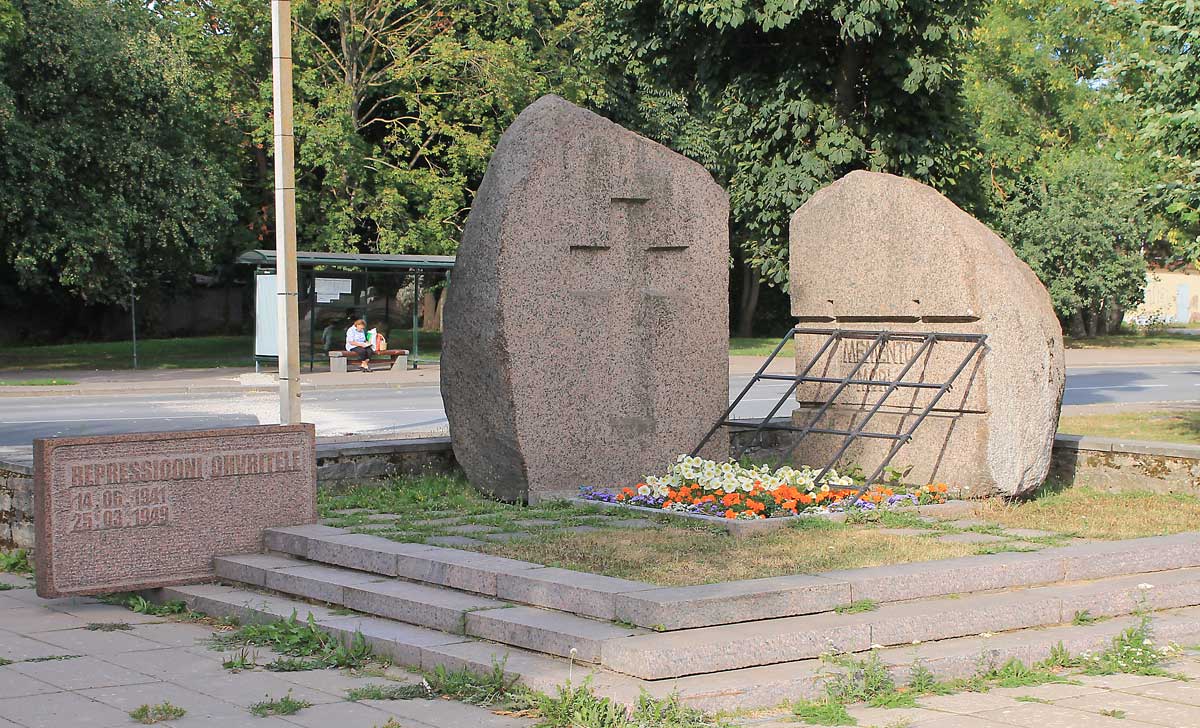
Memento Mori, monument to deportees
The memory of tens of thousands of victims of Stalinist repression in Narva is commemorated with a sculptural composition Memento Mori. Everyone probably knows that this Latin phrase urges us to remember death. The giant boulder with a Christian cross carved on one of its parts is split in two on the station square.
The significance of the monument
During the Soviet regime, four mass deportations took place in Estonia. The first one was carried out on June 14, 1941. At that time more than 10,000 people were deported from the republic to Siberia in supply wagons. The last mass deportation took place in March 1949.
Almost 60,000 people were deported from Estonia in ten years, many of them due to false denunciations of our envious and ill-wishers. After Stalin’s death, the Estonian people were not subjected to repression.
Echelons of repressed people from different parts of Estonia passed through Narva. The city witnessed the destruction of tens of thousands of people’s lives. The fault of many of them lay only in their unwillingness to submit to collectivization and their desire to preserve their independent state.
History of the monument
The Monument to the deportees in Narva was unveiled on June 14, 1992. The gray granite became a symbol of human suffering. There are two dates stamped on the memorial plaque: “June 14, 1941” and “March 25, 1949” – the dates when the largest deportations took place. Authors of the monument – sculptor E. Keller and architect Vladimir Orlov.
Location on the map
Other Points of Interest
- Narva is also home to the Latvian Memorial. It was established in memory of Latvians who fled World War I but died in Estonia.
- But there are also monuments in Narva, near which you want to be photographed. For example, the statue of chess player Paul Keres, which stands on Pushkin Alley.
- There is also a huge memorial park in Narva – the German Military Cemetery. Thousands of Wehrmacht soldiers who fell during the Second World War have found their resting place here.
